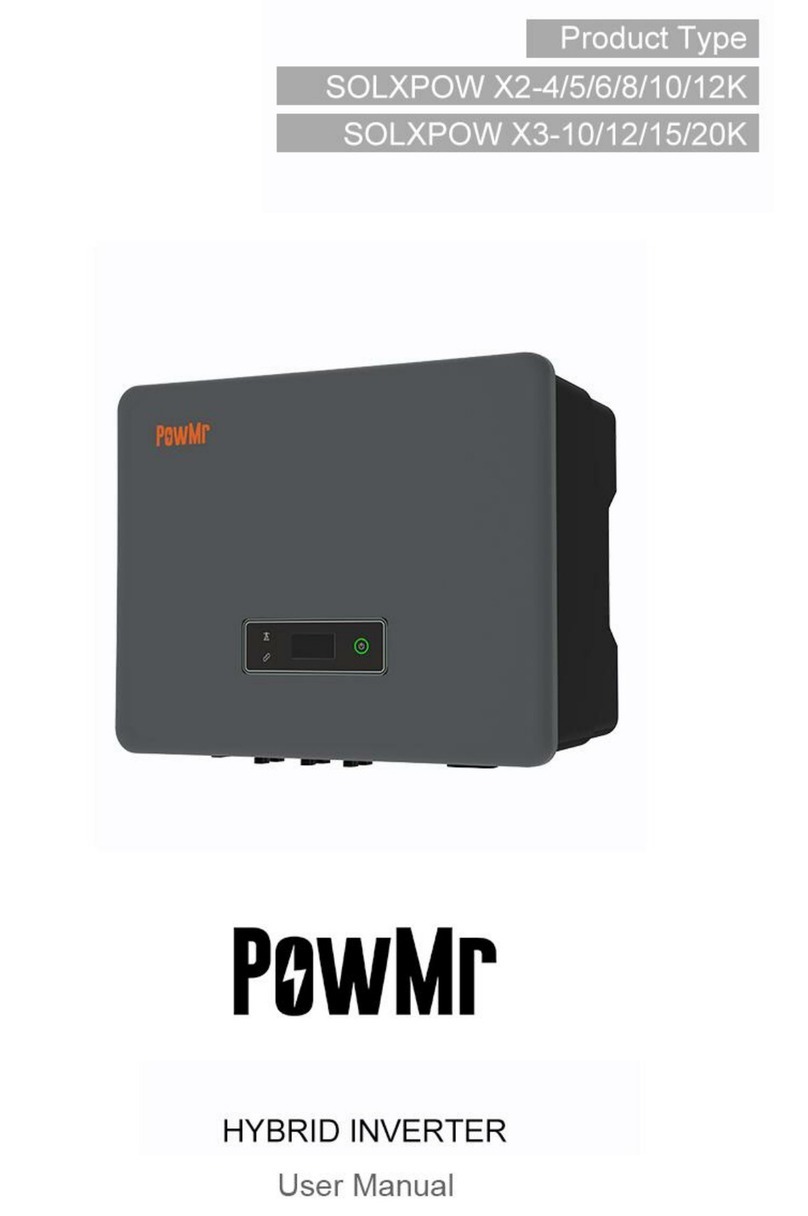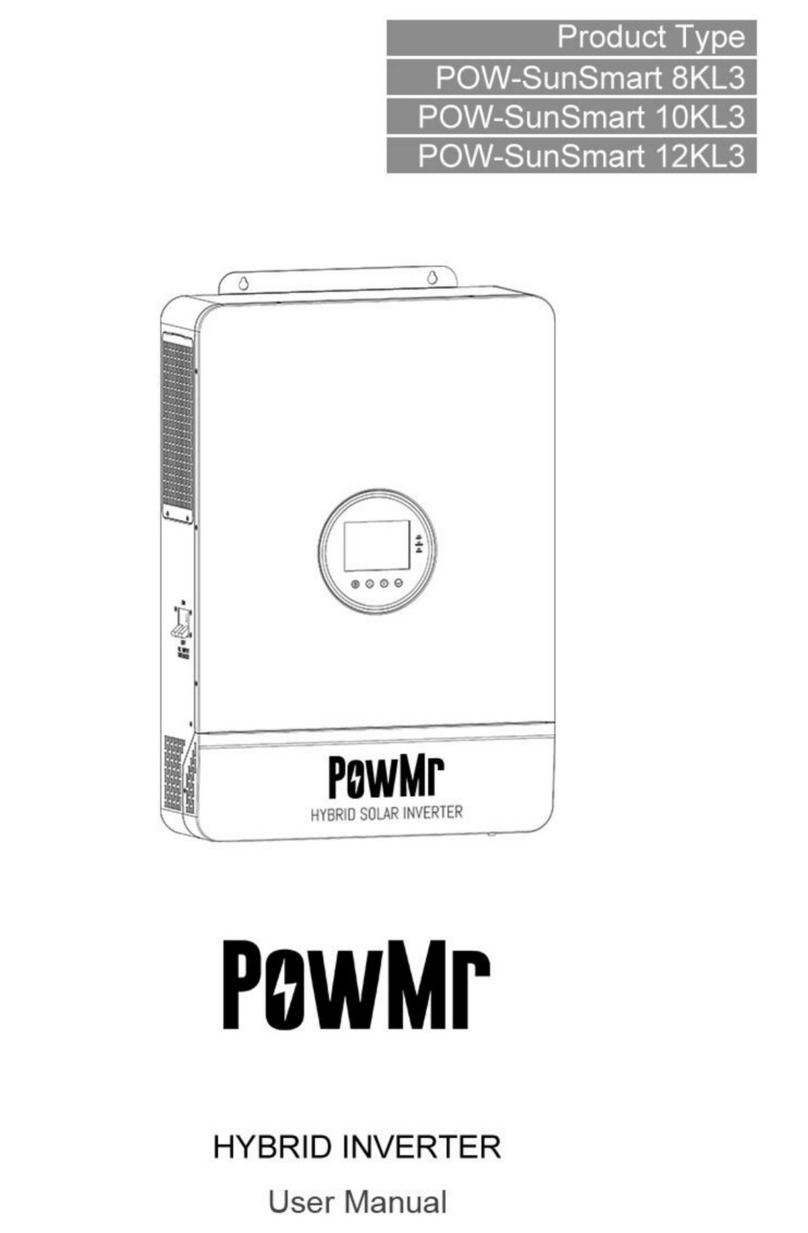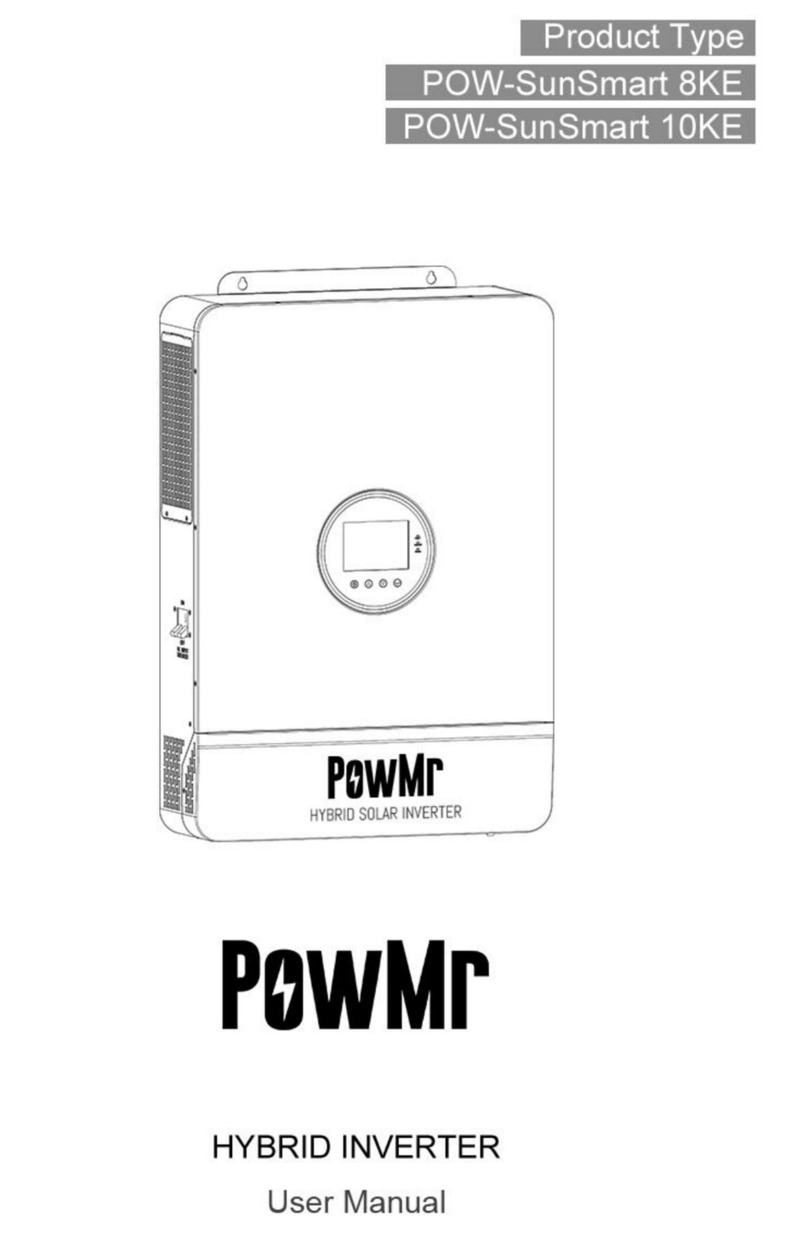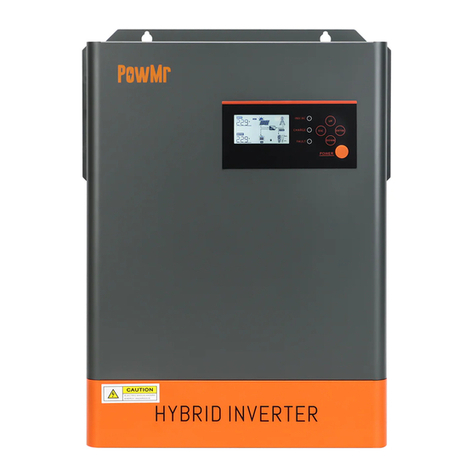
1. GENERAL INFORMATION ....................................................................................................................3
1.1 PRODUCT OVERVIEW AND FEATURES .....................................................................................3
1.2 BASIC SYSTEM INTRODUCTION .................................................................................................4
1.3 APPEARANCE ............................................................................................................................... 5
1.4 DIMENSION DRAWING ................................................................................................................. 6
2. INSTALLATION INSTRUCTIONS ........................................................................................................ 7
2.1 INSTALLATION PRECAUTIONS ................................................................................................... 7
2.2 WIRING SPECIFICATIONS AND CIRCUIT BREAKER SELECTION ............................................8
2.3 INSTALLATION AND WIRING ....................................................................................................... 9
2.4 PARALLEL MACHINE WIRE CONNECTION .............................................................................. 14
2.4.1 INTRODUTTION ...................................................................................................................14
2.4.2 PRECAUTIONS FOR CONNECTING THE PARALLEL CONNECTING LINES .................. 14
2.4.3 SCHEMATIC DIAGRAM OF PARALLEL CONNECTION IN SINGLE PHASE .....................15
2.4.4 SCHEMATIC DIAGRAM OF PARALLEL CONNECTION IN SPILIT PHASE .......................18
3. OPERATING MODES ......................................................................................................................... 22
3.1 CHARGING MODE .......................................................................................................................22
3.2 OUTPUT MODE ........................................................................................................................... 23
4. LCD SCREEN OPERATING INSTRUCTIONS ...................................................................................24
4.1 OPERATION AND DISPLAY PANEL .......................................................................................... 24
4.2 SETUP PARAMETERS DESCRIPTION ......................................................................................28
4.3 BATTERY TYPE PARAMETERS ................................................................................................ 32
5. OTHER FUNCTIONS .......................................................................................................................... 34
5.1 DRY CONTACT ............................................................................................................................34
5.2 RS485 COMMUNICATION PORT ................................................................................................34
5.3 USB COMMUNICATION PORT ................................................................................................... 34
5.4 PARALLEL COMMUNICATION FUNCTION (PARALLEL OPERATION ONLY) ......................... 34
5.5 CURRENT SHARING DETECTION FUNCTION (PARALLEL OPERATION ONLY) ...................34
6. PROTECTION ..................................................................................................................................... 35
6.1 PROTECTIONS PROVIDED ........................................................................................................ 35
6.2 FAULT CODE ............................................................................................................................... 36
6.3 HANDLING MEASURES FOR PART OF FAULTS ...................................................................... 38
7.TROUBLESHOOTING ......................................................................................................................... 39
8. TECHNICAL PARAMETERS ..............................................................................................................40



































